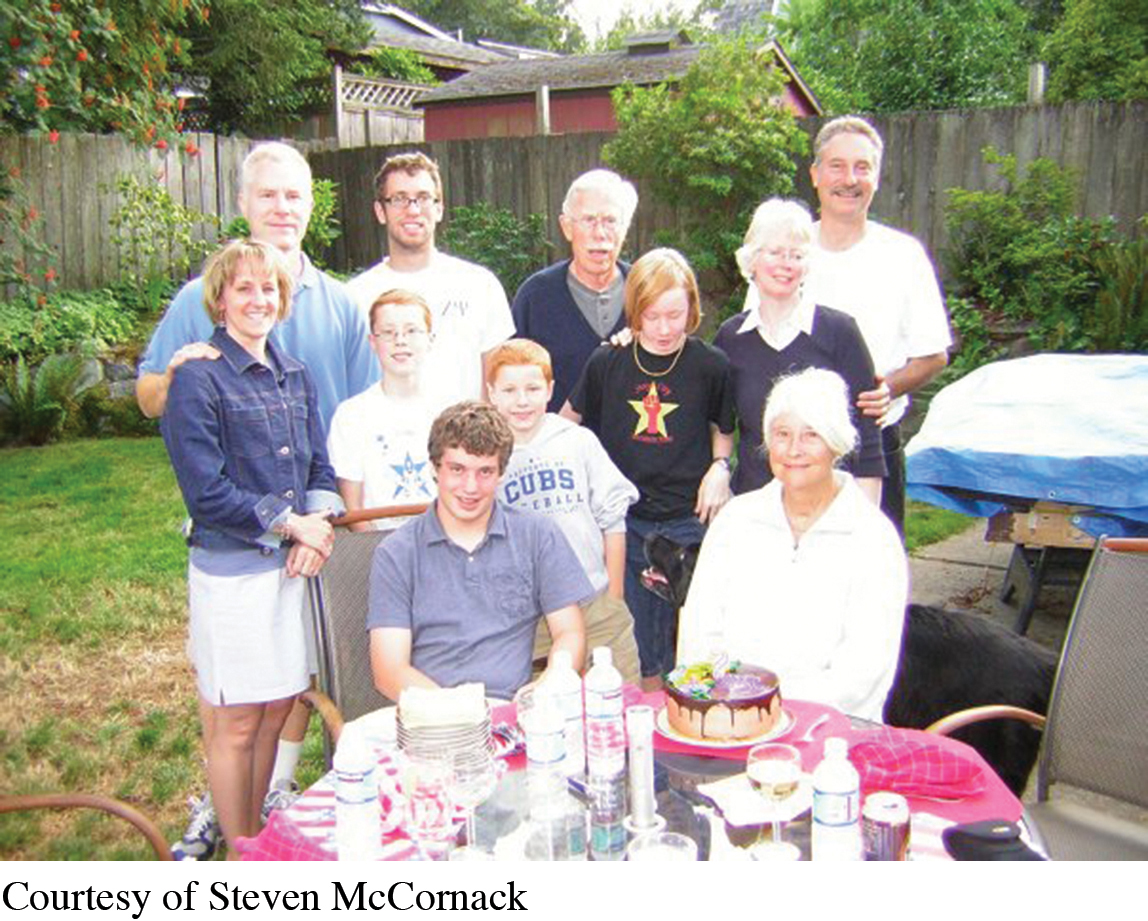Maintaining Romantic Relationships

My parents have been happily married for sixty years. Growing up with them as my relational role models, I got the impression that love just “happened.” They made it look easy, and I entered into my teen years thinking that people fell in love, got along, and experienced enduring love. But as I aged and negotiated the pitfalls of my own romances, I realized that what I had presumed about my parents’ relationship was completely wrong. Their love wasn’t a magical, mystical union that just existed. It was actively maintained, day in and day out. I began to notice how they went out of their way to compliment each other, give each other little gifts, and lift each other’s spirits through humor; how they assured each other of their feelings and commitment, and how they pitched in to help each other out with daily chores and tasks, regardless of fatigue or mood; how they shared everything with each other—all their hopes, dreams, and vulnerabilities—and how they accepted each other for who they really are. I realized that their “enduring love”—which had looked so effortless to me as a child—was actually the result of hard work.
To this point we’ve talked a good deal about the nature of love, and we’ve traced the stages through which many romances progress. Now let’s shift focus to a more practical concern: how you can use interpersonal communication to maintain a satisfying, healthy romantic relationship.

MAINTENANCE STRATEGIES
Like me when I was growing up, many people believe that love just happens—that once it strikes, it endures. But a basic rule of romantic love is that maintenance is necessary to keep relationships from deteriorating (Stafford, 2003). Relational maintenance refers to using communication and supportive behaviors to sustain a desired relationship status and level of satisfaction (Stafford, Dainton, & Haas, 2000). Across several studies, communication scholar Laura Stafford has observed seven strategies that satisfied couples—no matter their ethnicity or sexual orientation—routinely use to maintain their romances (Stafford, 2010). (See Table 11.2 for an overview of these categories.)
Positivity Positivity includes communicating in a cheerful and optimistic fashion, doing unsolicited favors, and giving unexpected gifts. Partners involved in romantic relationships cite positivity as the most important maintenance tactic for ensuring happiness (Dainton & Stafford, 1993). This holds true for men and women in straight relationships (Stafford, 2010), and for same-sex partners in gay and lesbian romances (Haas & Stafford, 2005). You use positivity when:3
You try to make each interaction with your partner enjoyable
You try to build your partner up by giving him or her compliments
You try to be fun, upbeat, and romantic with your partner
You undermine positivity when:
You constantly look for and complain about problems in your relationship without offering solutions
You whine, pout, and sulk when you don’t get your way
You criticize favors and gifts from your partner
Assurances The second most powerful maintenance tactic in boosting relationship satisfaction is assurances: messages that emphasize how much a partner means to you, demonstrate how important the relationship is, and describe a secure future together. Assurances may be expressed directly, such as saying “I love you” or “I can’t see myself ever being with anyone but you.” You may also communicate assurances more indirectly, by emphasizing the value you place on your time together—for example, sending a text message saying “I can’t wait to see you again” (Rabby, 1997). You use assurances when:
You regularly tell your partner how devoted you are to your relationship
You talk about future plans and events to be shared together (anniversaries, vacations, marriage, children)
You do and say things to demonstrate the depth of your feelings for your partner
You undermine assurances when:
You flirt with others and talk about how attractive they are in front of your partner
You tell your partner not to count on anything long term
You systematically avoid pledging love or fidelity to your partner
Sharing Tasks The most frequently practiced form of maintenance is sharing tasks. This involves taking mutual responsibility for chores and negotiating an equitable division of labor. Although this may sound like something that only serious, cohabiting, or married couples face, sharing tasks is relevant for all couples and includes responsibilities like providing transportation to work or campus, running errands, and making reservations for dinner. You share tasks when:
You try to pitch in equally on everyday responsibilities
You ask your partner how you can help out
You make an effort to handle tasks before your partner asks you to do them
You undermine task sharing when:
You strategically avoid having to do your share of the work
You never ask your partner how you can help out
You expect your partner to run errands and do chores for you, without reciprocating
Acceptance Part of what builds a strong sense of intimacy between romantic partners is the feeling that lovers accept us for who we really are, fully and completely, and forgive us our flaws. Acceptance involves communicating this affirmation and support. You convey acceptance when:
You forgive your partner when he or she makes mistakes
You support your partner in his or her decisions
You are patient with your partner when he or she is irritable or in a bad mood
You undermine acceptance when:
You hold grievances and grudges against your partner
You tell your partner that you wish he or she were different
You critique your partner’s appearance, personality, beliefs, and values

Self-Disclosure An essential part of maintaining intimacy is creating a climate of security and trust within your relationship. This allows both partners to feel that they can disclose fears and feelings without repercussion. To foster self-disclosure, each person must behave in ways that are predictable, trustworthy, and ethical. Over time, consistency in behavior evokes mutual respect and the perception that self-disclosure will be welcomed. You use self-disclosure when:
You tell your partner about your fears and vulnerabilities
You share your feelings and emotions with your partner
You encourage your partner to disclose his or her thoughts and feelings, and offer empathy in return
You undermine self-disclosure when:
You disparage your partner’s perspective
You routinely keep important information hidden from your partner
You betray your partner by sharing confidential information about him or her with others
Relationship Talks Romantic maintenance includes occasionally sitting down and discussing the status of your relationship, how you each feel about it, and where you both see it going. Relationship talks allow you to gauge how invested you each are and whether you agree on future plans and goals. They also provide a convenient forum for expressing and resolving concerns, and forestalling future conflict. You encourage relationship talks when you:
Set aside time in your schedule to chat about your relationship
Openly and respectfully share your relationship concerns with your partner
Encourage your partner to share his or her feelings about the relationship with you
You undermine relationship talks when you:
React defensively and egocentrically whenever your partner shares relationship concerns
Avoid or refuse to have relationship talks with your partner
Actively ridicule the need to discuss the relationship
Social Networks Romances are more likely to survive if important members of a couple’s social networks approve of the relationship (Felmlee, 2001). For example, communication scholars Malcolm Parks and Mara Adelman (1983) measured how much support romantically involved individuals received from their partner’s friends and family, what percentage of their partner’s network they had met, and how often they communicated with these people. Using these factors and others, Parks and Adelman were able to predict with 88 percent accuracy which relationships would survive. What were the strongest determinants of whether couples stayed together? Support from family and friends, and regular communication with one’s partner.
Fostering healthy relationships with surrounding friends and family appears especially crucial for those involved in interethnic relationships (Baptiste, 1990), and for gay and lesbian couples. Approximately 67 percent of interethnic marriages end in divorce, compared with an overall divorce rate of 40 percent, the largest reasons being lack of network support and cultural disapproval (Gaines & Agnew, 2003). Gay and lesbian couples report having supportive environments—such as churches or clubs—and being treated “the same” as straight couples by their friends and family as especially important for their relationship stability and satisfaction (Haas & Stafford, 1998). You foster supportive social networks when you:
Tell your partner how much you like his or her friends and family
Invite your partner’s friends or family members to share activities with the two of you
Willingly turn to family members of both partners for help and advice when needed
You undermine social networks when you:
Make critical and disparaging remarks regarding your partner’s friends and family
Intentionally avoid encounters with your partner’s friends and family
Demand that your partner choose between spending time with you and spending time with friends and family